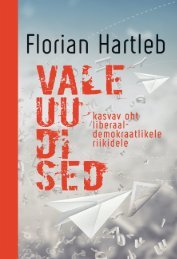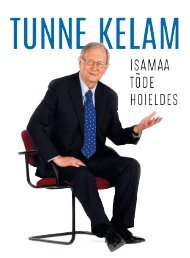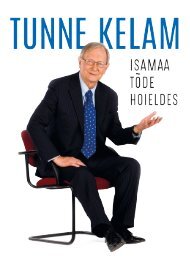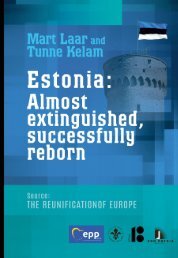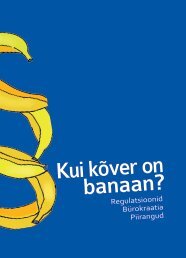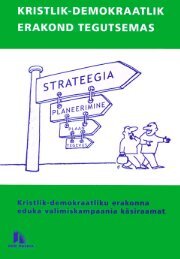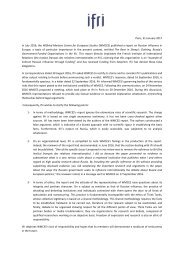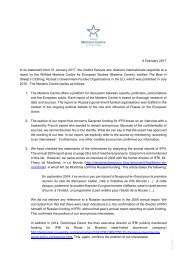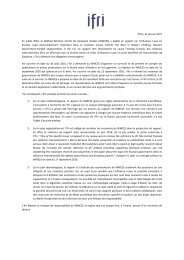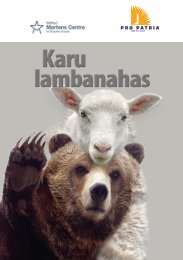Estonia: Almost extinguished, successfully reborn
The following text is the shortest possible review to help inform friends and guests from abroad about Estonia’s experience with foreign occupation and totalitarianism as well as its road to peacefully re-establishing national inde-pendence on the basis of democracy. Tunne Kelam Member of the European Parliament
The following text is the shortest possible review to help inform friends and guests from abroad about Estonia’s experience with foreign occupation and totalitarianism as well as its road to peacefully re-establishing national inde-pendence on the basis of democracy.
Tunne Kelam
Member of the European Parliament
You also want an ePaper? Increase the reach of your titles
YUMPU automatically turns print PDFs into web optimized ePapers that Google loves.
ESTONIA:<br />
<strong>Almost</strong><br />
<strong>extinguished</strong>,<br />
<strong>successfully</strong><br />
<strong>reborn</strong><br />
By that date, however, the situation in <strong>Estonia</strong> had<br />
already changed fundamentally. One of the tipping<br />
points became the all-<strong>Estonia</strong>n meeting of the Heritage<br />
Societies on April 14–17, in Tartu. The organizers dared<br />
to present the national flag at a public meeting of<br />
10,000, displaying the long-forbidden blue, black and<br />
white national colours together, but on separate strips<br />
of fabric. Immediately these colours started to spread.<br />
Participants returned to their homes all over the country<br />
with a new spirit of courage and hope. By the end of<br />
May and early June, one could see the tricolour on display<br />
at many public meetings all over <strong>Estonia</strong>.<br />
In May, 1988, the national-political ideals started to<br />
attract thousands of young people. Leading <strong>Estonia</strong>n<br />
rock musicians transformed the patriotic message into<br />
language and style that the younger generation eagerly<br />
embraced. In a way, Alo Mattiisen and Juri Leesment’s<br />
“Five patriotic songs” created a bridge between the 19 th<br />
century national awakening and the current one. When<br />
in June the authorities attempted to cut off the performance<br />
of these songs in Tallinn’s Town Hall Square,<br />
the crowds proceeded to the Song Festival grounds at<br />
the outskirts of the city. This was the start of the spontaneous<br />
“night song festivals” where tens of thousands<br />
waved national flags, sang patriotic songs and celebrated<br />
one night after the other. The tremendous spirit of<br />
togetherness and unity made the people feel stronger<br />
and more courageous. It was then that the artist Heinz<br />
Valk coined the term “Singing Revolution”.<br />
39





